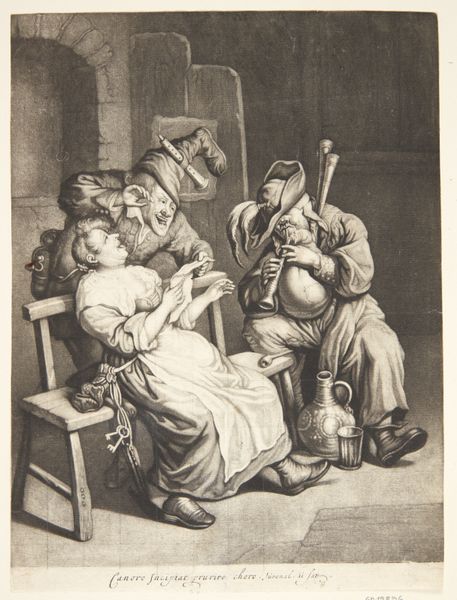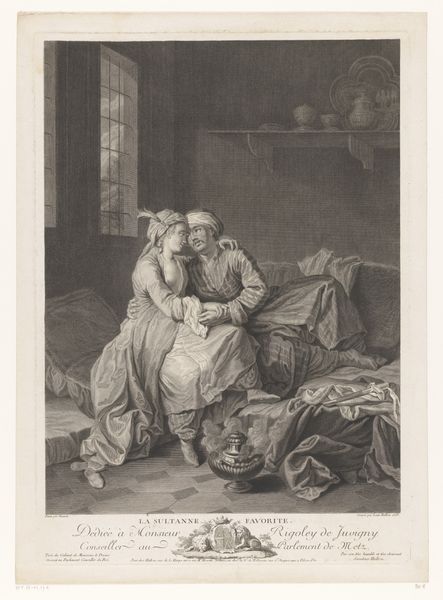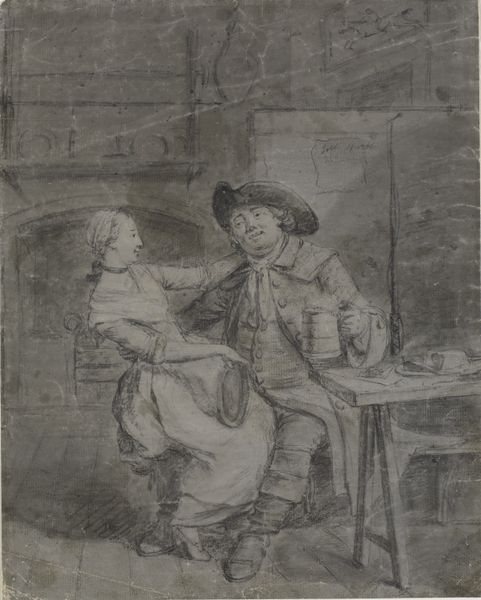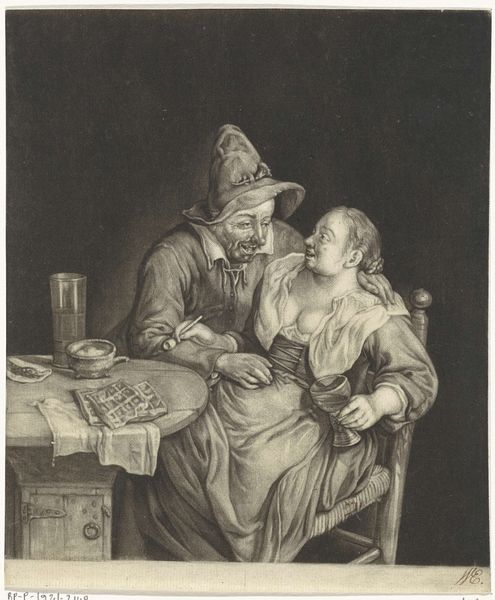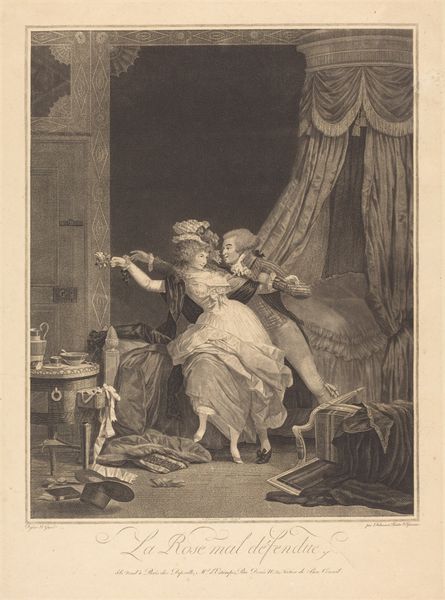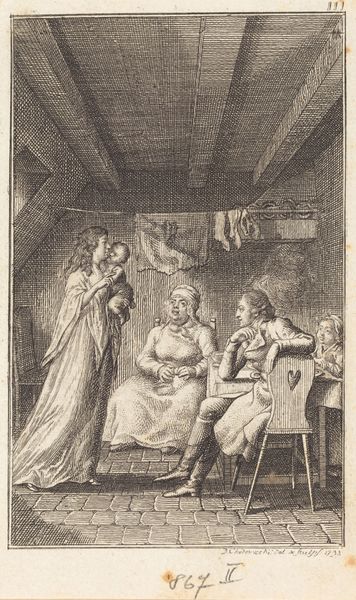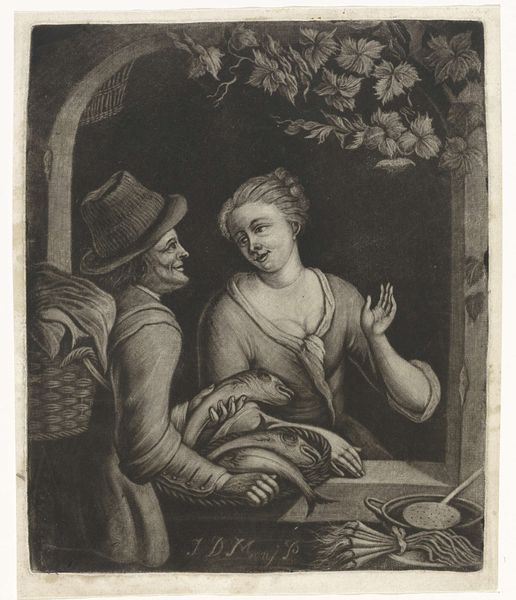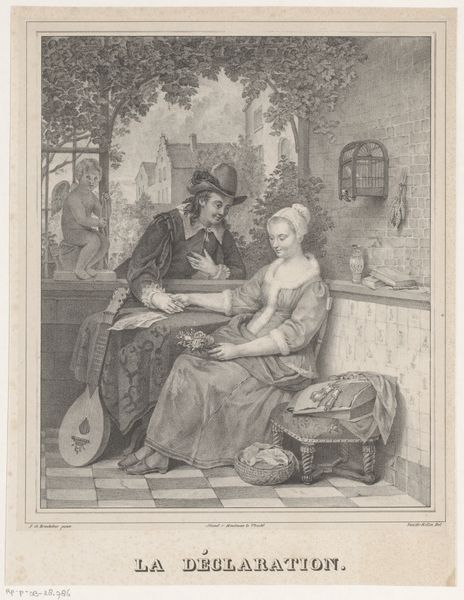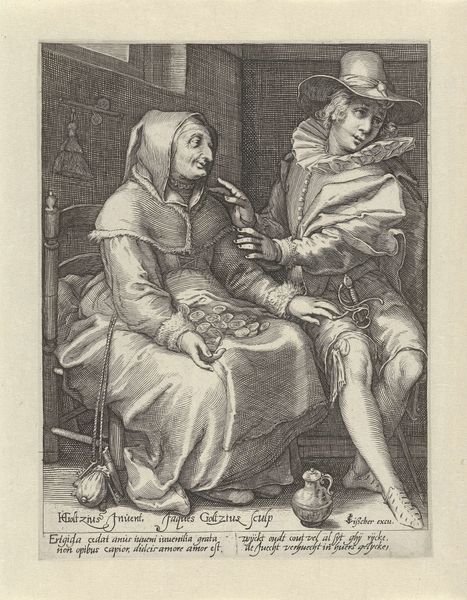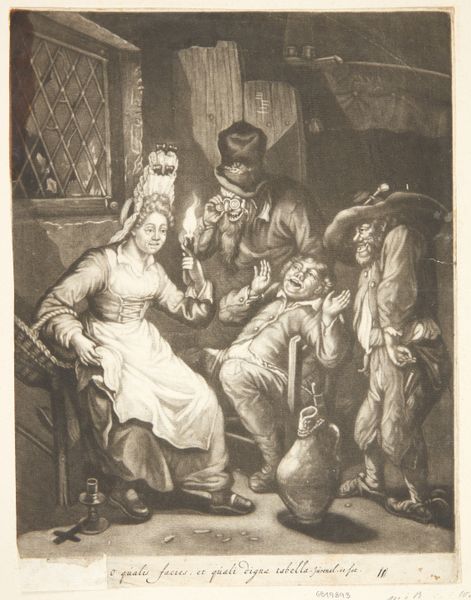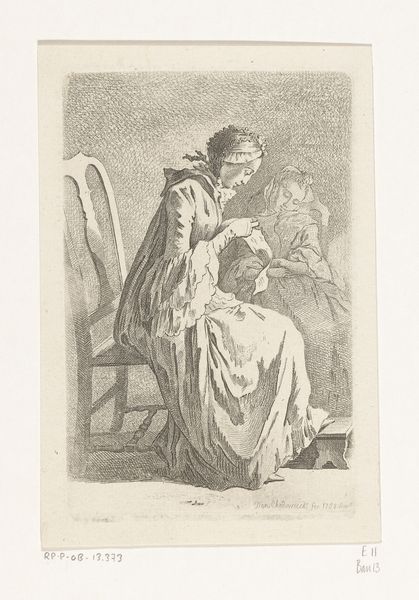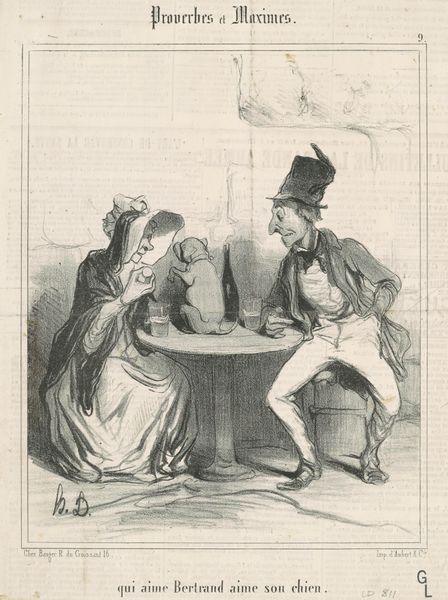
Dimensions: Sheet: 8 7/8 in. × 7 in. (22.6 × 17.8 cm)
Copyright: Public Domain
Curator: Samuel Alken’s 1785 print, “Courtship in Low Life,” captures a moment steeped in social commentary. It’s an etching with pen and ink, offering a snapshot into a world often unseen, a glimpse of the “lower class”. What’s your immediate read? Editor: Bleak and boisterous at once. There’s a shadowed theatricality, but with something coarse lurking. Is that genuine affection or transaction on display? Curator: Possibly both? Images of courtship have been a common subject for centuries, and this example plays with some established iconography – but with a distinct edge. Take note of how he leans in, overflowing his wine, in contrast to the passive glance she casts. It’s more like an economic negotiation. He tips the scales – figuratively and literally. Editor: So you’re pointing to the image of "courtship" as itself being scrutinized here. This isn’t about an innocent suitor and his maiden, but about revealing how social standing shapes intimate moments? Curator: Precisely! Alken engages a popular Romantic aesthetic, the “picturesque”, finding beauty in the grittiness of everyday life, but is ultimately satirizing popular notions of courtly love by revealing economic pressures behind supposedly ‘pure’ courtship rituals. It echoes earlier Dutch genre paintings while simultaneously engaging in contemporary social critique. The figures appear like types: archetypes embodying their class. Notice his gesture and in contrast her almost staged composure. This feels akin to theatrical propaganda, showcasing the perceived 'moral failings' of the lower classes to an elite audience. Editor: Yes, and it becomes painfully obvious: Her ‘virtue’ and his clumsy pursuit are reduced to elements in a classist narrative. In some ways the message seems caught in amber: a stark commentary but, like propaganda, almost self-defeating in its simplistic framing. But then, what power does image actually have in that power dynamic? Does it merely reflect and confirm what elites already believe? Curator: Images definitely served multiple roles. Prints like these entered into public debates about moral reform, the Poor Laws, even anxieties around population growth. But perhaps most acutely it reveals an active project to surveil and define what was seen as “low life,” thereby reinforcing existing class hierarchies. Editor: Food for thought, seeing such critical perspectives visualized through a fine balance of satirical expression and socio-political narrative! It leaves one thinking about not only the subjects represented but who the intended viewer actually was.
Comments
No comments
Be the first to comment and join the conversation on the ultimate creative platform.
